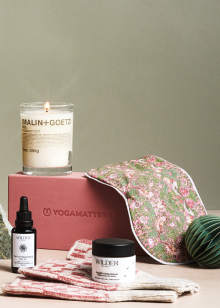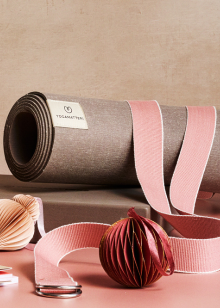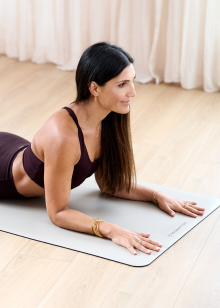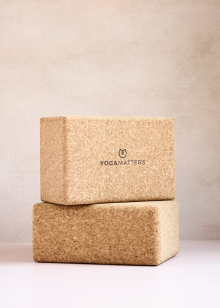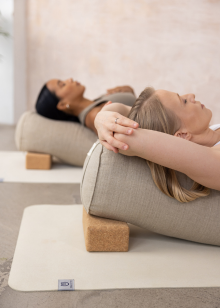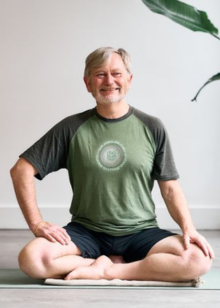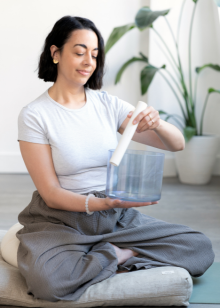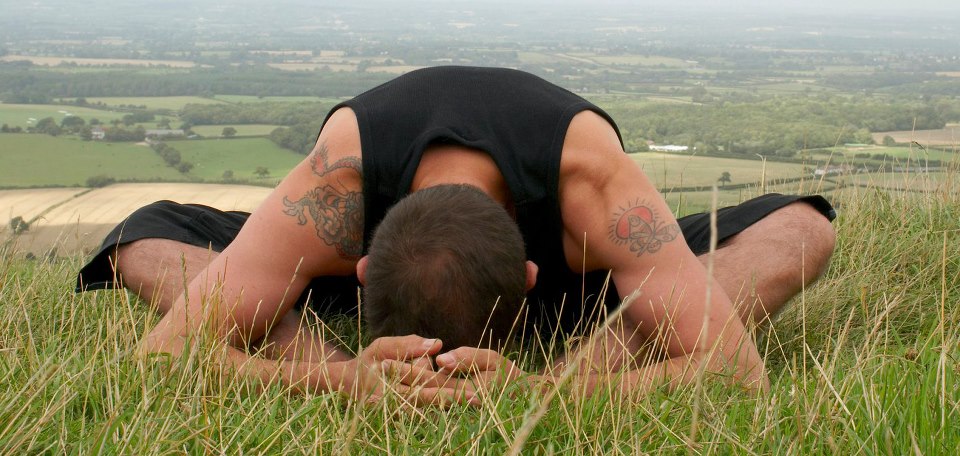Norman Blair began practising yoga in the early 1990s and has been teaching since 2001. His teaching and practice embrace both Ashtanga yoga and Yin yoga, as well as mindfulness meditation. Norman teaches classes, workshops and teacher training in and around London and offers supervision for yoga teachers.
 In 2016, Norman published Brightening Our Inner Skies: Yin and Yoga, a beautifully written and designed book which practically and provocatively explores yoga, self-transformation and social responsibility. Ten years in the making, this book charts Norman’s personal journey alongside a meditation on the role of yoga practice in the world, including over 120 photographs of poses, suggested sequences, stories and well-researched debates.
In 2016, Norman published Brightening Our Inner Skies: Yin and Yoga, a beautifully written and designed book which practically and provocatively explores yoga, self-transformation and social responsibility. Ten years in the making, this book charts Norman’s personal journey alongside a meditation on the role of yoga practice in the world, including over 120 photographs of poses, suggested sequences, stories and well-researched debates.
It was a pleasure to be able to chat to Norman and delve deeper into his life, teaching and the book itself.
You believe that through regular practice, we can experience profound changes in our mind and body. How has this been true for you personally in your yoga practice over the past 25 years?
Yes, over time, I have noticed significant changes in myself: how I relate to myself and what is around. I’m calmer and more perceptive. Having said that, I still of course feel anxiety and can get annoyed and angry. I am human – like all of us!
 You practise and teach Yin and Ashtanga yoga. How do these practices complement one another?
You practise and teach Yin and Ashtanga yoga. How do these practices complement one another?
I have been practising and teaching Ashtanga yoga and Yin yoga for many years. Yoga as commonly practised is active, dynamic and energetic. Muscles are vigorously engaged and poses are rarely held for more than thirty seconds. I have practised Ashtanga yoga for over twenty years and I deeply appreciate its many benefits. It has been part of paths of profound transformation for me over this time. I have also been practising Yin yoga since 2001 and I greatly value the qualities – stillness, staying, slowing down – that this form has bought into my life. Too often, we are trying to do too much: we are like these ducks on the pond of life – seemingly serene above the surface yet underneath frantically paddling desperately to stay afloat. Beneath our busy ways of living, there are often oceans of exhaustion. Yin yoga could perhaps help to readjust this unbalanced way of being. Yes it is good to stretch, to strengthen, to sweat in a yoga class – but what about some softening, where there might be more space for slowing down, where there could be room to dive more deeply into this being? There is great potential in this combining of strong and soft practices. We need balance to maintain sustainability. Balance of the outer (strong) and the inner (soft). A saying from Zen is: “only when we are softly pliable, can we be strong”.
You teach at various studios across London, including the Life Centre, Indaba and the Shala. What is the perception on yoga in the city? How has it changed and how does it need to change further?
Yoga has changed a huge amount since I began practising in the early 1990s. It has become much more commercialised and – in my opinion – there is much greater fetishising of what I call ‘extreme asana’. Instagram and social media have had a significant influence on the common perception of yoga. My approach is much more about functionality and self-transformation than the aesthetics.
 You talk about yoga helping us to liberate us from our limiting stories that we tell ourselves. How does this work in practice?
You talk about yoga helping us to liberate us from our limiting stories that we tell ourselves. How does this work in practice?
For our limiting stories, I think that yoga needs to be part of a package that also includes meditation, self-reflection (through techniques such as journaling) and psychotherapy. Just sticking a leg behind our head will not significantly shift our stories…but it can be an element in this process (just as indicating that change can be possible and that we can be conscious directors of change).
Why does mentoring matter? What role has it played in your own life and what led you to take on the role of mentor for others?
We all need support. I regularly see a supervisor. Personally, I think that getting support could be a requirement for all yoga teachers (like it is for all psychotherapists and many other complementary therapists): someone to hear us, to metaphorically hold our hand when necessary, to encourage us at the growing edges. I started mentoring for Yogacampus about ten years ago (as part of their TT, participants had to see what is these days called ‘a contact teacher’ – someone where they could get more individualised advice). About 2011, I began to run these groups on my own and make them open to all yoga teachers. Slowly, the idea has become more popular as people realise the great benefits that they can receive from such groups. Grounded in confidentiality, they are a means for us to enhance our skills as teachers.
Why is self-practice important and what would you say to someone who doesn’t know where to start?
Self-practice is essential. Just start. Five minutes every other day is a great place to start. Gradually, it can become more important and more ‘natural’ in our lives. Baby steps is a good image to use… How did we learn to walk? Not by running a marathon – but by standing up and then falling over again and again and again. It’s the same for self-practice. Small amounts done regularly are much better than big amounts done occasionally.
You say that it took you over ten years to write your book ‘Brightening Our Inner Skies: Yin and Yoga’. I guess the burning question is: why did it take so long?
Because I wanted to do it well. Because I was teaching and practising and learning and studying. Because the more we consider, the better something might be. Because life is short and books are long!
In the book, you talk about social responsibility. What does social responsibility have to do with yoga?
Yoga and social responsibility are the same. Taking care of self (through practising yoga) is intimately connected to taking care of others and what is around (ie. social responsibility). If it is not, then this is merely narcissistic absorption and obsession with self. That is not going to change anything, but merely reinforce the walls of self that yoga aspires towards softening and shifting…
It’s evident in conversation with Norman Blair that this is a man who believes in going deep – in his practice, his teaching and his writing. His depth of knowledge about yoga is combined with a depth of insight and experience.
Norman Blair takes us for a ride deep into the meaning of life and the purpose of practice. You will be engaged, entertained and enlightened. Bernie Clark, author of ‘The Complete Guide to Yin Yoga’ and ‘Your Body, Your Yoga’
To find out more about Norma Blair, his teaching and his writing, visit http://www.yogawithnorman.co.uk
